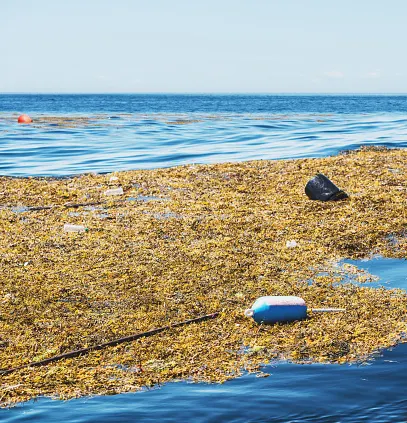
What sits at the bottom of the Bay of Fundy? Nearly 2 million pieces of litter
Researchers reviewed the sea floor at 281 locations throughout the Bay of Fundy during a three-year period and estimated an average of 137 pieces of debris covered each square kilometre
Lying at the bottom of the Bay of Fundy sits nearly two million pieces of junk, mostly consisting of plastic and fishing gear, says a new study published in Marine Pollution Bulletin.
The document, titled Benthic marine debris in the Bay of Fundy, indicated the sea floor debris is "numerous and widespread" and was located between New Brunswick and Nova Scotia. Majority of the items were located within nine kilometres from shore.
Although the study pegged the garbage tally at 1.8 million, the number could actually be higher and the initiative is the first effort at trying to quantify marine debris on the eastern Canadian sea floor.
ALSO SEE: 'Garbage pizza': How to stop wasting thousands in groceries every year
MULTIPLE ISSUES SURROUND LITTER
Study co-author Tony Walker, a professor at the School for Resource and Environmental Studies at Dalhousie University in Halifax, told CBC it's not just the "esthetics" that is the issue.
"Just the physical presence, the footprint on the sea floor, which is a loss of potential habitat for marine organisms, that's one thing. Macroplastics also pose a threat when they are ingested or entangle marine creatures," said Walker.
Researchers reviewed the sea floor at 281 locations throughout the Bay of Fundy during a three-year period and estimated an average of 137 pieces of debris covered each square kilometre.
The litter consisted mostly of plastics, which comprised 51 per cent of the items, followed by abandoned, lost or discarded fishing gear at 28 per cent and then cable, metals and tires made up 21 per cent of the number.

Tony Walker and Alexa Goodman are lead authors of the study. They say it’s the first time marine debris has been quantified in Eastern Canada. (Dave Laughlin/CBC)
As part of the study, Dalhousie University research assistant Alexa Goodman sifted through 33 hours of video.
"I was struck by the amount of garbage bags that we were finding, and mostly partially covered, so it was hard to tell how long they've been there," she told CBC.
After using the 137 items of debris per square kilometre estimate as a framework for the study, researchers came up with a tally of 1.8 million pieces of garbage on the Bay of Fundy's sea floor.
"That is likely to be an underestimate. Sometimes this material is buried. And as we know, this is only the visible portion of the debris. We cannot see the microplastics," said Walker.
Also of note from the study were two hotspots -- one near the Digby ferry terminal and the other at Gardner Creek, N.B. -- where one site had a dozen garbage bags. It was suggested that tidal action and underwater structure could trap junk in those areas.
NO DIRECT IMPACT OF PLASTIC ON MARINE LIFE
While the negative impact of plastic on marine life has been well-documented, this particular study did not find any direct consequences of it on marine organisms.
As well, it didn't observe any cases of ghost fishing, which describes lost gear that capture and kill sea life. However, Goodman stated abandoned, lost or discarded fishing gear is still a problem.
Walker called the fishing industry a "big economic driver" in Atlantic Canada.
"I think it's wise for us to make sure that this is conducted as sustainably as possible to maintain the industry," he said.
Source: CBC
Thumbnail courtesy of Getty Images.










